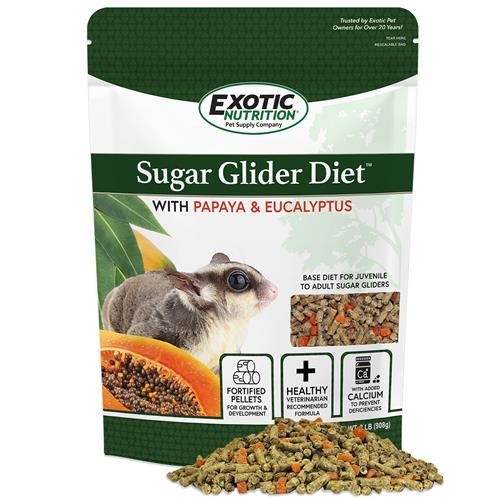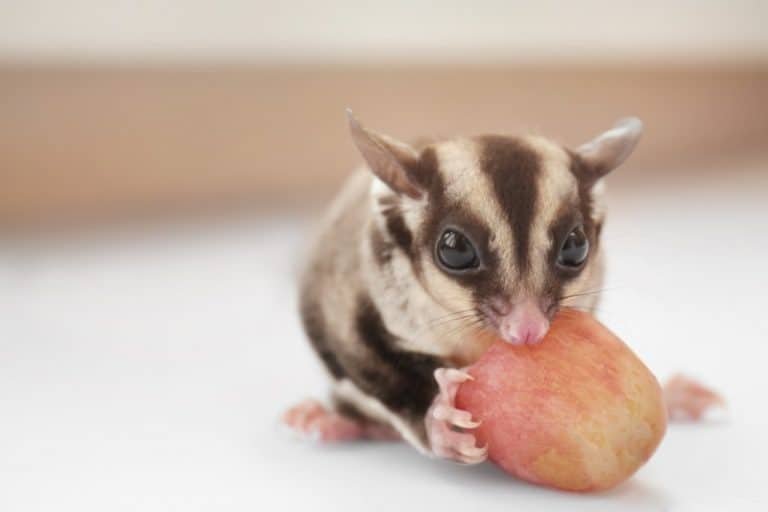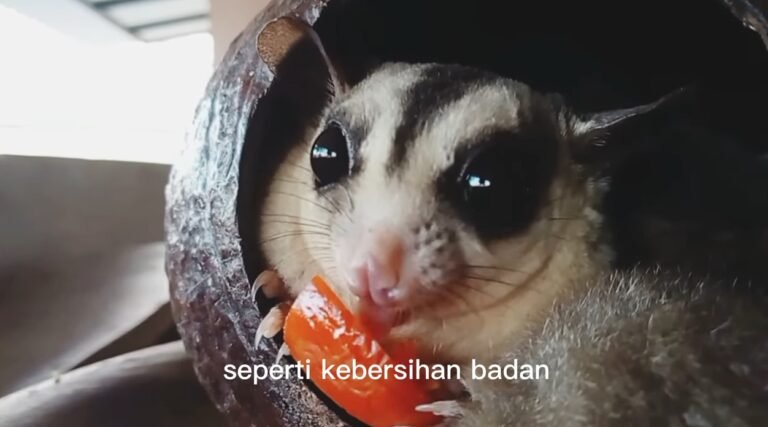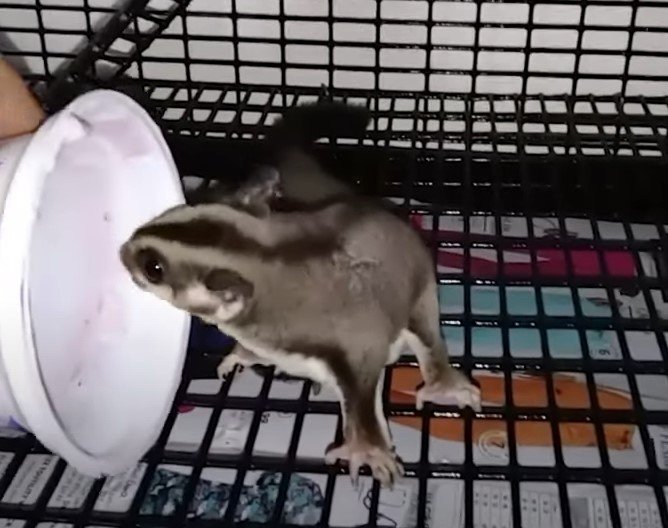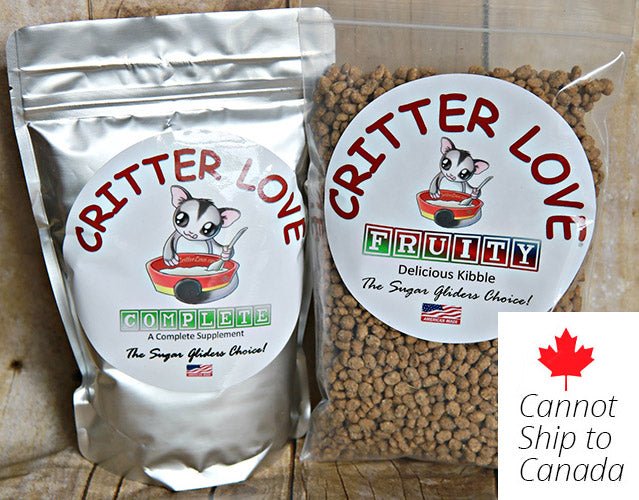Sugar Glider Feeding Schedule
Are you a proud pet glider owner or considering bringing home these adorable critters? Well, let’s talk about their diet! Sugar gliders, those small nocturnal marsupials from Australia and Indonesia, have specific nutritional needs that play a crucial role in their overall health and well-being. Understanding what they require is essential for providing them with a balanced glider diet.
Maintaining an appropriate feeding schedule is key to ensure sugar gliders receive all the necessary nutrients. It helps keep their energy levels up and promotes proper growth. From bonding pouches to insects, there are many factors to consider. So, let’s dive into the world of sugar glider nutrition and explore how you can provide your new glider with the best possible care.
Let’s make sure your little friend stays healthy and happy!
Establishing a Proper Feeding Schedule:
Consistency is key when establishing a feeding schedule for sugar gliders. To ensure their health and well-being, it’s important to follow a regular routine. Here are some essential tips for creating an effective sugar glider feeding schedule:
- Determine the number of meals per day based on their age and activity level. Sugar gliders generally require two main meals each day, but this can vary depending on factors such as their age and how active they are.
- Offer food during their active hours in the evening or early morning. Sugar gliders are nocturnal animals, so it’s best to provide them with food during their natural waking hours.
- Avoid sudden changes in their feeding routine to prevent stress. Sugar gliders thrive on consistency, so try to stick to a set schedule as much as possible. Sudden changes can disrupt their eating habits and cause unnecessary stress.
By following these guidelines, you can establish a proper feeding schedule for your sugar gliders that promotes good health and overall well-being.
Note: It’s important to provide a balanced diet for your pets that includes fresh fruits, vegetables, protein sources like insects or cooked meat, and specialized sugar glider pellets.
Remember to consult with a veterinarian experienced in exotic pet care for specific dietary recommendations tailored to your sugar glider’s needs.
For more information on sugar glider care, including dental disease prevention and bedding options, refer to reputable online resources or seek advice from experienced sugar glider owners or breeders.
Now you’re ready to create a consistent feeding routine that will keep your adorable sugar gliders happy and healthy!
Achieving a Balanced and Nutritious Diet:
Feeding your sugar glider a balanced and nutritious diet is essential for their overall health and well-being. By providing them with the right combination of proteins, fruits, vegetables, and supplements, you can ensure they receive all the necessary nutrients they need to thrive.
- Proteins play a crucial role in your sugar glider’s diet. You can offer them proteins through various options such as insects, lean meats like chicken or turkey, or specially formulated pellets designed for sugar gliders. These protein sources help support muscle development and provide essential amino acids.
- Including a variety of fruits in your sugar glider’s diet is important as they offer vital vitamins and natural sugars. Some examples of suitable fruits include apples, grapes, and bananas. These fruits not only provide necessary nutrients but also add flavor to their meals.
- Leafy greens like kale or spinach are excellent additions to your sugar glider’s diet as they offer fiber and additional nutrients. Incorporating these greens into their meals helps promote digestive health and provides essential vitamins.
To ensure a healthy diet for your sugar glider:
- Offer a mixture of healthy treats that includes proteins, fruits, and leafy greens.
- Avoid feeding them sugary diets or foods high in fat as it can lead to health problems such as obesity.
- Provide fresh food dishes daily to maintain optimal freshness.
- Consider incorporating supplements recommended by veterinarians to meet any specific nutritional requirements.
- Keep an eye on their dental health by offering appropriate chew toys or treats that help keep their teeth clean.
Remember that each sugar glider may have individual dietary needs, so consulting with a veterinarian experienced in exotic pets is always advisable when creating a diet plan for your furry friend.
By following these guidelines and providing a well-balanced diet rich in proteins, fruits, vegetables, and supplements tailored to your sugar glider’s needs, you can ensure they receive the nutrition necessary for a healthy and happy life.
Recommended Meal Ratio for Sugar Gliders:

Feeding your sugar glider a balanced diet is crucial to ensure their overall health and well-being. The recommended meal ratio for these adorable creatures consists of 50% protein, 25% fruits, and 25% vegetables. Let’s delve into why each component is important:
- Protein-rich foods: Proteins play a vital role in supporting muscle development in sugar gliders. Make sure that protein sources such as mealworms, crickets, and cooked chicken are a significant part of their diet.
- Fruits for energy: Fruits not only provide essential vitamins and minerals but also serve as an excellent source of energy for sugar gliders. Offer them a variety of fruits like apples, bananas, grapes, and berries to keep them active and healthy.
- Vegetables for digestion: Vegetables contribute fiber and other necessary nutrients that aid in digestion for sugar gliders. Incorporate vegetables like carrots, sweet potatoes, leafy greens, and bell peppers into their meals to promote proper digestion.
By following this recommended meal ratio of 50% protein, 25% fruits, and 25% vegetables, you can ensure that your sugar glider receives a well-rounded diet that meets its nutritional needs. Remember to monitor their intake and adjust portions accordingly based on their activity level and individual requirements.
Keep in mind that while these guidelines provide a general framework for feeding sugar gliders, it’s always essential to consult with a veterinarian who specializes in exotic pets to tailor the diet specifically to your pet’s needs.
Providing the right balance of proteins, fruits, and vegetables will help keep your sugar glider healthy and thriving!
Ensuring Nutritional Variety and Preventing Boredom:
To keep your sugar glider healthy and engaged, it’s important to provide a diverse feeding schedule. By offering a variety of foods, you can ensure they receive the necessary nutrients while preventing boredom. Here are some tips to achieve nutritional variety for your furry friend:
- Protein Sources: Include a wide range of protein sources in their diet, such as crickets, mealworms, or cooked chicken pieces. This will not only provide essential amino acids but also add different flavors to their meals.
- Rotating Fruits: Regularly rotate fresh fruits to introduce new flavors and provide various nutritional benefits. Consider options like berries, sweet potatoes, or even homemade fruit treats. This will keep their taste buds excited and prevent them from getting bored with the same fruits every day.
- Introducing Vegetables: Add diversity to their diet by introducing various vegetables. Carrots, bell peppers, broccoli, green beans are great options that offer different textures and tastes. Remember to chop them into small pieces for easy consumption.
- Stimulating Natural Foraging Instincts: Sugar gliders have natural foraging instincts that can be stimulated through puzzle feeders or food enrichment toys. These interactive toys challenge them mentally and physically during mealtime, providing both exercise and mental stimulation.
By incorporating these practices into your sugar glider’s feeding routine, you can ensure they enjoy a varied diet while staying healthy and entertained. Remember to always monitor their intake and adjust portion sizes accordingly. With the right combination of nutrition and engagement, your sugar glider will thrive in its dining room adventures!
Step-by-Step Guide to Feeding Sugar Gliders:
Feeding sugar gliders requires a step-by-step approach to ensure their nutritional needs are met and to establish a strong bond with these adorable creatures. Here’s a simple guide to help you get started:
- Start with protein: Begin by offering a small portion of protein, such as cooked chicken or mealworms. This is an essential part of their diet and should be provided daily.
- Include fruits and vegetables: After the protein, introduce a variety of fruits and vegetables into their diet. Some suitable options include apples, grapes, carrots, and leafy greens. These provide important vitamins and minerals for their overall health.
- Monitor food intake: Keep an eye on how much food your sugar gliders consume during each feeding session. Adjust the quantities accordingly to ensure they are getting enough without overfeeding them.
- Cleanliness is key: Remove any uneaten food after a few hours to maintain cleanliness in their enclosure. This helps prevent spoilage and keeps their living space hygienic.
- Provide fresh water daily: Sugar gliders need access to fresh water at all times. You can either place a shallow dish of water in their enclosure or attach a water bottle for easy drinking.
By following this step-by-step feeding guide, you can ensure that your sugar gliders receive the right balance of nutrients while strengthening your bond with them along the way.
Remember, establishing trust takes time, so be patient during the bonding process as you build a loving relationship with your furry friends.
Now that you have an understanding of how to feed sugar gliders effectively, let’s dive into more details about their dietary requirements and other care tips in our next section.
Final Thought
In order to ensure the health and well-being of your sugar glider, it is crucial to establish a balanced feeding schedule. By providing them with a nutritious diet and following recommended meal ratios, you can support their overall nutritional needs. Offering a variety of foods will prevent boredom and ensure they receive all the necessary nutrients.
To create a proper feeding schedule for your sugar glider, follow this step-by-step guide:
- Start by researching the specific dietary requirements of sugar gliders.
- Determine the appropriate meal ratio based on their age and activity level.
- Offer a mix of fresh fruits, vegetables, proteins, and supplements.
- Provide treats sparingly to avoid overindulgence.
- Monitor their weight and adjust the feeding schedule accordingly.
By adhering to these guidelines, you can promote optimal health for your sugar glider.
Remember thatConsistency is key. Stick to a routine that works for both you and your pet, ensuring they receive regular meals throughout the day.
In conclusion, maintaining a balanced feeding schedule is essential for the well-being of your sugar glider. By prioritizing their nutritional needs and providing variety in their diet, you can help them thrive in captivity.
Now that you have learned about the importance of a balanced feeding schedule for sugar gliders, take action today! Implement these guidelines into your routine and give your pet the care they deserve.
FAQs
1.Can I feed my sugar glider only fruits?
While fruits are an important part of their diet, it is crucial to provide a balanced mix of proteins and vegetables as well. This ensures they receive all the necessary nutrients for optimal health.
2.How often should I feed my sugar glider?
Sugar gliders should be fed twice daily – once in the morning and once at night. This helps mimic their natural eating patterns in the wild.
3.Can sugar gliders eat human food?
Some human foods, such as fresh fruits and vegetables, can be safely given to sugar gliders. However, it is important to avoid feeding them foods that are toxic or harmful to their health.
4.Is it necessary to provide supplements for my sugar glider?
Yes, supplements are recommended to ensure your sugar glider receives all the essential vitamins and minerals they need. Consult with a veterinarian for guidance on suitable supplements.
5.How can I prevent my sugar glider from becoming bored with its diet?
To prevent boredom, offer a variety of foods and rotate them regularly. You can also provide enrichment activities and toys to keep your sugar glider mentally stimulated.


